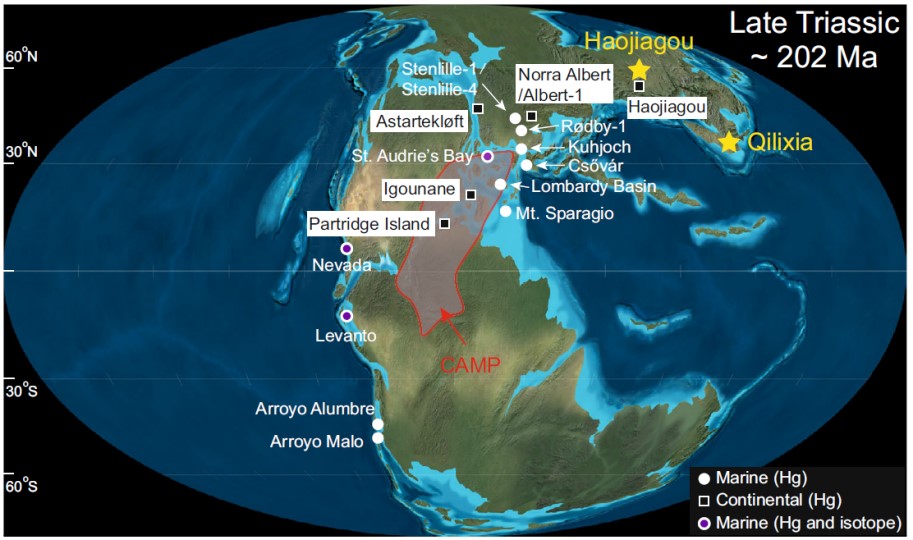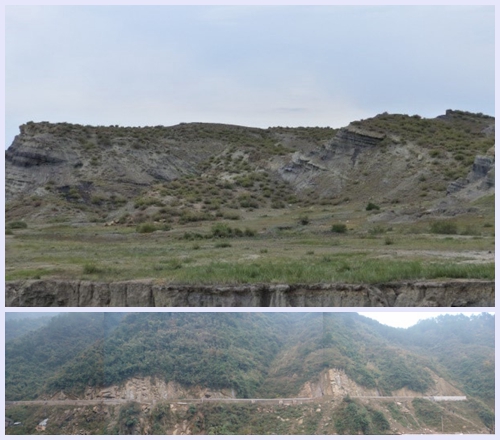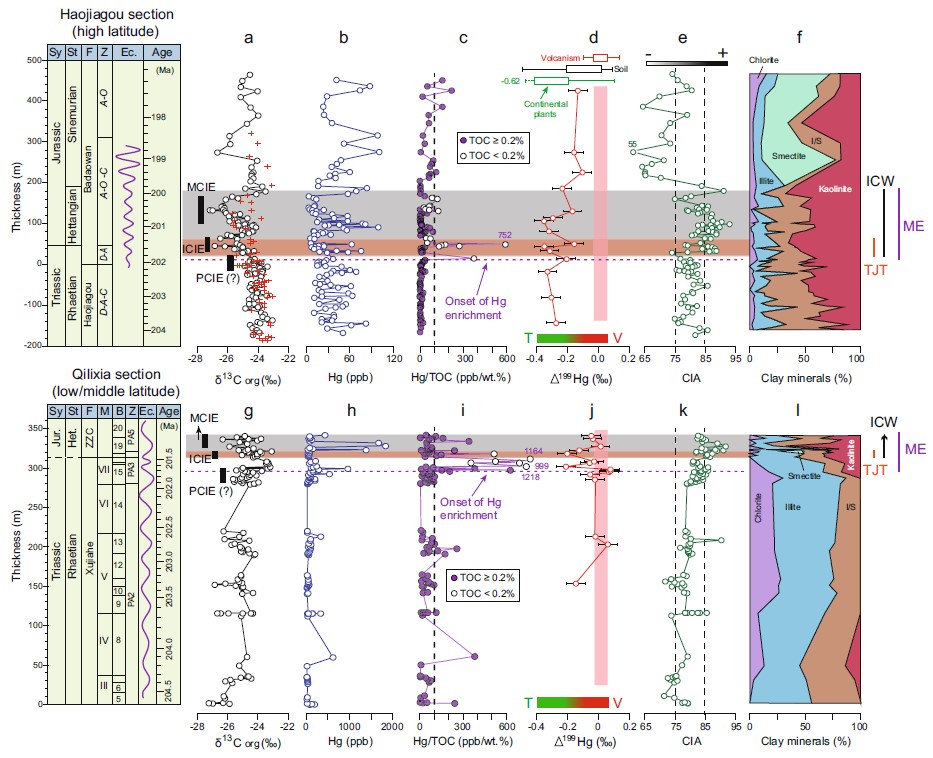The first show of direct linkage between intensified volcanism and immediate weathering
Intensive volcanism has been considered a major driver of environmental/climatic changes throughout Earth history, including global warming due to excessive volcanogenic CO2 emission, acidification, ozone depletion etc., which in turn have been perceived important killing mechanisms of mass extinctions. However, direct evidences of the linkage between volcanism and paleoenvironmental /paleoclimatic perturbations are still lacking.
The Triassic-Jurassic transition (~ 201 Ma) saw one of the most catastrophic volcanic eruptions during the Phanerozoic, namely the Central Atlantic Magmatic Province (CAMP) and it has been suggested to have triggered a series of environmental/climatic perturbations which eventually caused the end-Triassic mass extinction. However, due to the lack of volcanic ash sediments outside its eruption sites, the spatial extent to which the volcanism has had impact on is not well understood.
Recently, researchers from China University of Geosciences (Wuhan), Nanjing Institute of Geology and Palaeontology, Chinese Academy of Sciences (NIGPAS), together with other institutions from USA, have reported elevated Hg concentrations and isotopes from terrestrial sediments of two sites in the Junggar Basin and the Sichuan Basin in China, which are spatially distant from the CAMP and interpreted them as direct evidences of intense volcanism in association with CAMP. This study was published online in the journal Nature Communications.
Besides, these researchers also reported pronounced elemental and clay mineralogical changes at the same level as the elevated Hg concentrations and interpreted these changes as solid signs of enhanced weathering intensity of sediment sources. Resultantly, the researchers then suggested a causal link between intensified volcanisms and chemical weathering of sediments during that time.
"Our work is the first to show direct linkage between intensified volcanism and immediate weathering response outside of the CAMP sites during that critical time interval in Earth history," Prof. WANG Yongdong says.
With the help of previous time framework established by astronomical cycles, the researchers found out that the impact of volcanism on weathering has lasted for ~ 2 million years, which is consistent with their modelling results. Altogether, these researchers suggested that chemical weathering of rocks on land may have been an important method Mother Earth adopted to draw down excess CO2 in the atmosphere in order to maintain relatively stable climatic conditions on the Earth surface ecosystems.
Also by comparing the amplitude of the enhancement of chemical weathering conditions between the two study sites which occupied a high and a low paleolatitudes respectively, those researchers also concluded that chemical weathering responded more pronouncedly in the higher latitudes than in the low latitudes at that time during the eruption of the CAMP.
Reference: Jun Shen*, Runsheng Yin, Shuang Zhang, Thomas J. Algeo, David J. Bottjer, Jianxin Yu*, Guozhen Xu, Donald Penman, Yongdong Wang*, Liqin Li, Xiao Shi, Noah J. Planavsky, Qinglai Feng, Shucheng Xie, 2022. Intensified continental chemical weathering and carbon cycle perturbations linked to volcanism during the Triassic-Jurassic transition. Nature Communications, 13, 299. https://www.nature.com/articles/s41467-022-27965-x.

Fig.1 Geobal paleogeography of the Late Triassic (~200 Ma). Yellow stars represent the study sites, including The Haojiagou section (~60°N, high latitude) on the North China Craton, and the Qilixia section (~30–40°N, low/middle latitude) on the South China Craton. Circles and squares represent other marine and continental sections, respectively.

Fig.2. Geological sections of the Haojiagou in Junggar Basin of Xinjiang (Upper) and the Qilixia in the Sichuan Basin (Lower), China

Fig. 3. Profifiles of the Haojiagou (Upper, HJG) and Qilixia (Lower, QLX) sections, showing the Organic carbon isotope (δ13Corg, ‰), Mercury concentrations (Hg, ppb), Ratios of mercury to total organic carbon (Hg/TOC, ppb/wt %), Chemical index of alteration (CIA) and clay minerals.